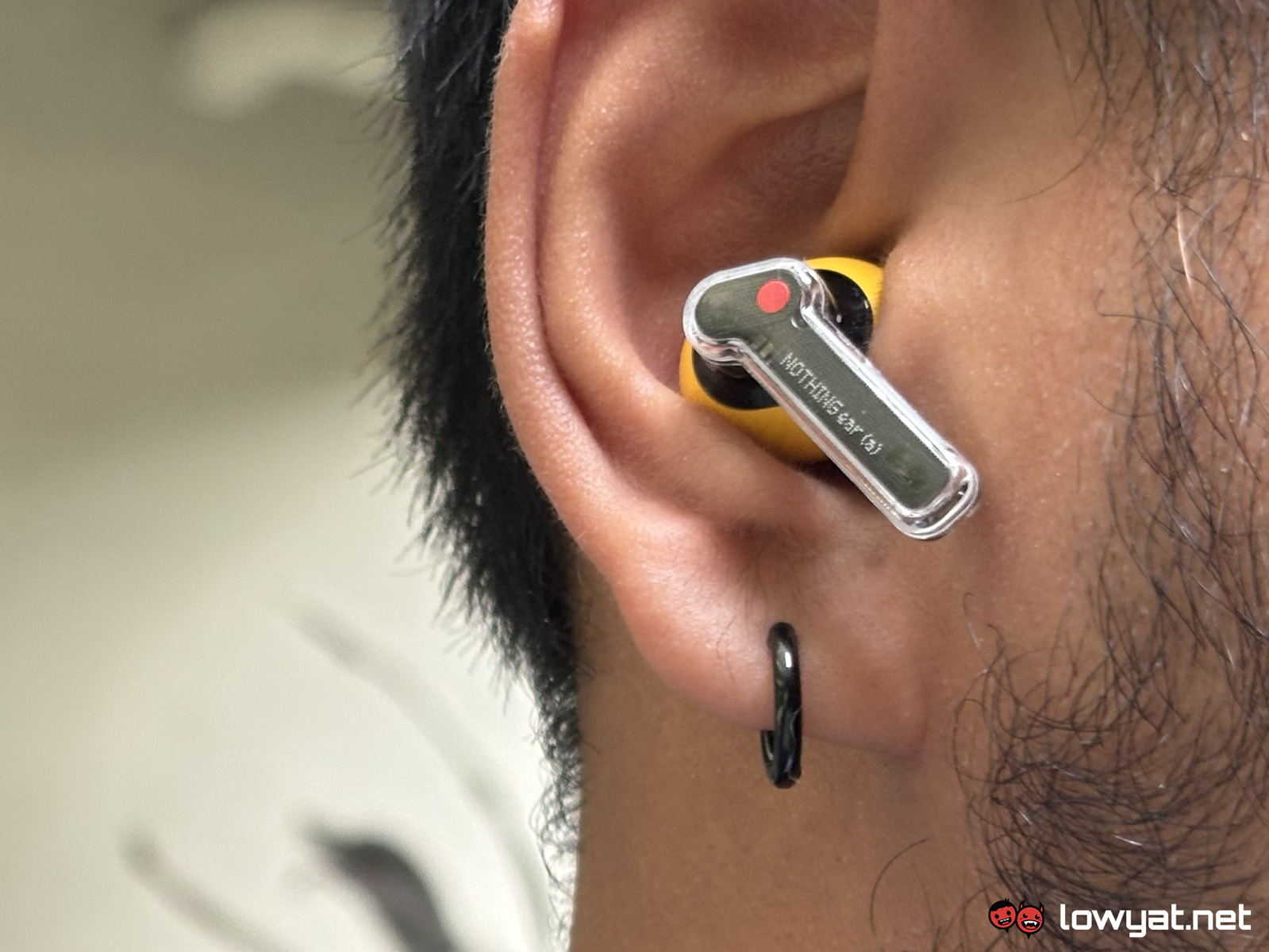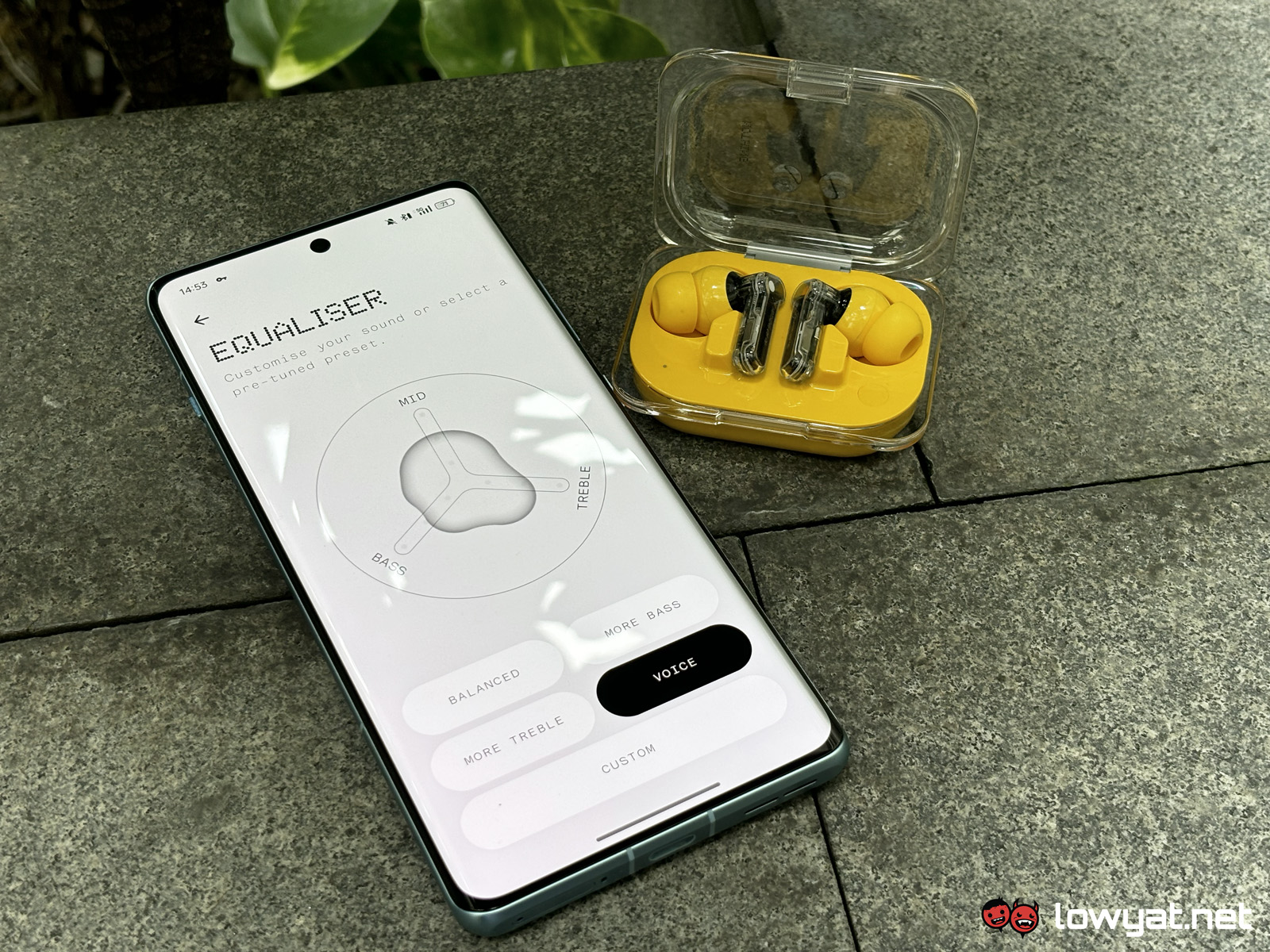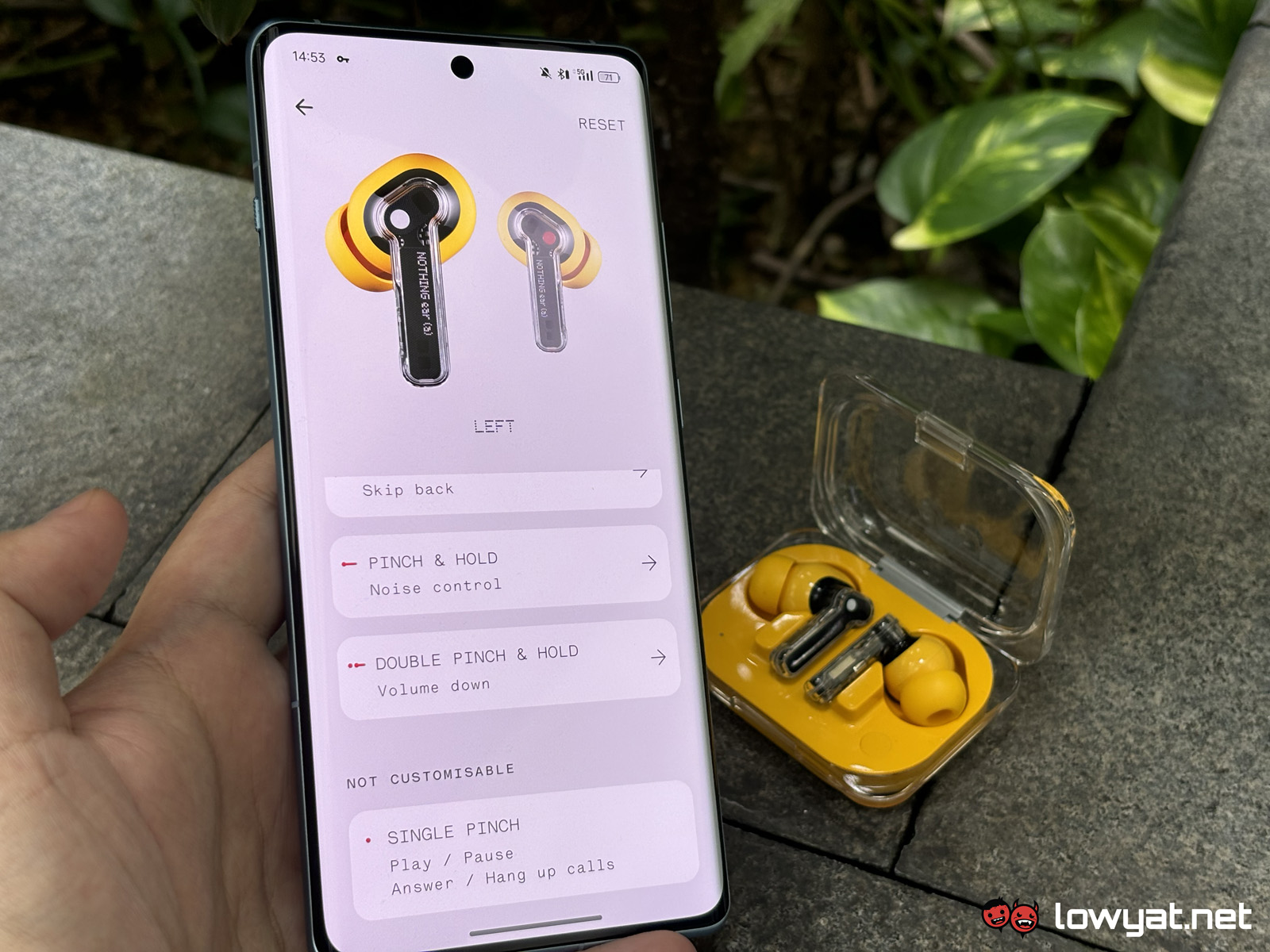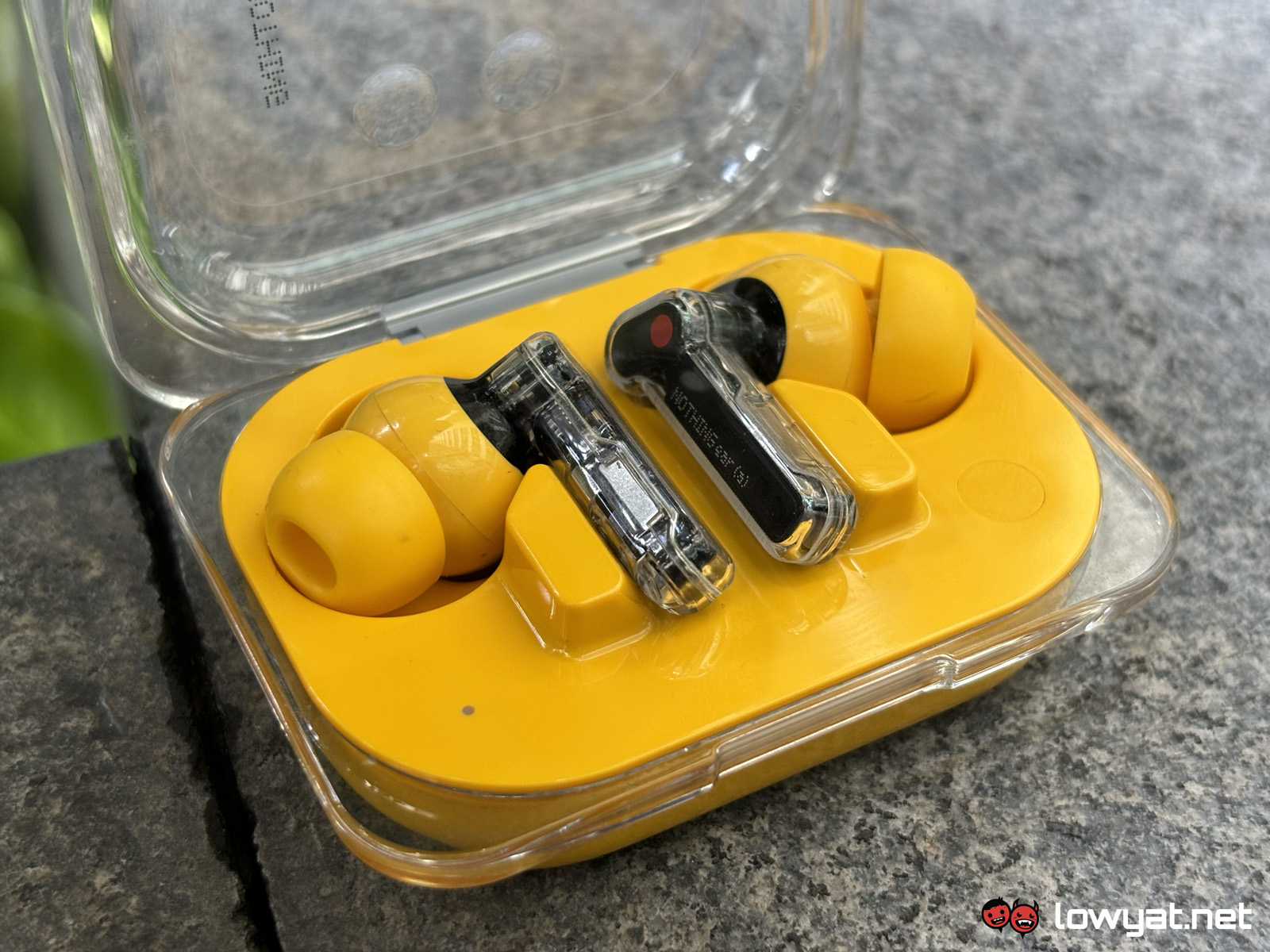Last month, Nothing released a couple of new earbuds with the flagship being called just the Ear along with a new entry that’s supposed to be more affordable called the Ear (a). With a price difference of nearly RM200, there surprisingly isn’t much of a gap between the two models and there’s actually one particular advantage to picking the cheaper option over the higher-end variant, which I’ll talk about a bit later.
What Is It?
The Nothing Ear (a) is a pair of wireless earbuds that cost RM479, putting it squarely in the mid-range section. It comes with active noise cancellation, transparency mode, stem controls, and the unique transparent design that the brand has come to be known for. The case itself has a transparent outer shell while the earbuds have a transparent design on the stems, revealing some of the control components.
It comes in three colour options with the yellow one being exclusive to the Ear (a). I’ve seen people online being quite divided with this colour, with some loving it and some thinking it’s trash. Personally, I think it’s a striking look that makes it slightly stand out from conventional colours but it’s not bright enough to be gaudy, so I’m in the former camp. A cute little bonus is that instead of the usual R and L indications, the right bud gets a red dot while the left has a white dot.
The 11m drivers are made up of PMI and TPU diaphragms, which are cheaper compared to the more premium ceramic drivers of the Ear. When it comes to battery life, both of the new models have made significant improvements compared to the Ear (2), with the Ear (a) having a claimed total battery life of up to 42.5 hours, without ANC.
For those who are interested in using AI in their daily lives, the earbuds are also integrated with OpenAI’s ChatGPT, but you can only use it while connected to a Nothing smartphone. There’s also a low-latency mode for gaming if you’re into that. On the protection side, the buds are IP54 dust and water resistant while the case itself has an IPX2 rating.
Is It Any Good?
First, let’s talk about the sound. The earbuds sound amazing; they’re loud, have a rich tone, and have fantastic sound separation, meaning both vocals and instrumentals shine. My only gripe with how they sound is that it can sometimes be just a tad bass-heavy, which I’m not a fan of, but I easily fixed this by switching to the vocals profile in the EQ setting.
Speaking of which, you can go into the app and customise the EQ, but it is limited to mid, bass, and treble. Additionally, they are Hi-Res Audio certified and can support the LDAC codec, but the LHDC 5.0 codec as well as the much more advanced equaliser are reserved for the Nothing Ear.
The Ear (a) supports Google Fast Pair, Microsoft Swift Pair, and Dual Connection. I was shocked to experience that these are some of the best earbuds in terms of connectivity, even across platforms. Whether it was connected to an iPhone, Mac, or Android, the audio switching was quick, relatively seamless, and reliable. This made it super easy for me to daily drive the earbuds with all my devices since I didn’t have to think about the platform it was connected to.
On the control front, the pinching mechanism for the stems are pretty responsive and quite familiar for someone coming from the AirPods Pro. The app even lets you customise double and triple pinches, as well as holds, with an option to enable volume control by double pinching and holding. There’s also in-ear detection that works reliably, which you don’t see often in this price bracket.
The battery life is unbelievably good as the earbuds consistently lasted me the whole day in the office. On a single charge, they can give you 9.5 hours of listening time without ANC and 5.5 hours with ANC turned on, which is more usage time than the Ear. Either way, they can certainly last a lot longer than I would need to keep them on and I found that I only needed to charge the case about once a week.
What’s The Catch?
Of course, given the price of the Ear (a), there are some usual cut corners. The biggest weakness of these buds is the ANC, which is pretty disappointing. Don’t get me wrong, it’s not exactly terrible. The ANC does work but if you’ve ever used premium earbuds from Sony or Apple, you’ll notice right away that it doesn’t block out that much more than a pair of budget earphones.
On the other hand, the transparency mode has the opposite problem where you can’t really hear much and you definitely need to take the earbuds off if you wanna talk to someone. Half the time I put them on, I’m never certain whether it’s on ANC or transparency mode until I trigger the mode switch. CEO Carl Pei actually announced an upcoming update to improve transparency mode, but we’ll get there when we get there.
Another cost-saving decision the company made to get to this price point is to not implement wireless charging for the charging case of the Ear (a), opting to only include it in the Ear’s case. This isn’t necessarily a deal breaker, but it’s just something you should take note of.
Should I Buy It?
The Nothing Ear (a) is probably my favourite earbuds to come out of 2024 so far. The battery life is phenomenal, the dual connection and audio switching between devices is quick and reliable, it’s got a distinctive look, and great audio quality.
Yes, the ANC is a bit of a miss, but if you’re looking for earphones under RM500, chances are that that’s not the highest priority for you. So, yes, if you’re looking for a good pair of mid-range earbuds, I’d highly recommend you give these a go.
Follow us on Instagram, Facebook, Twitter or Telegram for more updates and breaking news.









